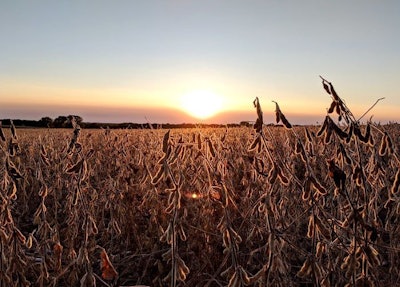
In this age of climate change, inflation, war and high fuel prices, biofuels created from commodity crops like soybeans and corn would seem to check a lot of boxes and solve several problems. Yet, no solution is perfect, and the U.S. government’s mandates to convert such crops and other foodstuffs into diesel biofuel under the Renewable Fuel Standard (RFS) epitomize how the best intentions can still create unintended consequences and negative ripple effects.
Indeed, with pet food supply chains already in disarray for three years, RFS mandates are impacting pet food ingredient availability. The same goes for livestock feed. Even worse, now the U.S. agency in charge of RFS is doubling (tripling?) down: The Environmental Protection Agency (EPA) just issued a multi-part, three-year proposal to expand U.S. diesel biofuel production via higher volume mandates.
Biofuel mandates spurred ‘food vs. fuel’ debate from the start
While biofuels in the strictest sense have been around since the early 1900s, the petroleum oil embargo of the 1970s spurred greater interest in their development and use around the world; commercial use began in the 1990s. “Since 1992, biodiesel has been commercially manufactured across Europe, with Germany being the largest producer,” according to the “History of Biodiesel” on the Farm Energy website. “In the U.S., biodiesel was first manufactured commercially in 1991 in Kansas City, Missouri.”
The RFS was implemented in 2005 as part of the Energy Policy Act. It didn’t take long for the “food vs. fuel” debate to arise: 2008, coinciding with a global increase in food prices.
Sound familiar? And food (and pet food) inflation just before and during the Great Recession was nothing compared to now, when we’re experiencing highs in prices not seen since the 1980s. Combined with pandemic-induced supply chain disruptions, the perfect storm has been brewing to take that food vs. fuel challenge to a new level—one that now encompasses pet food, too.
How biofuel policy affects pet food
Dana Brooks, CEO and president of the Pet Food Institute (PFI), explained the link between biofuel and pet food in a Trending Pet Food podcast in June 2022. (My colleague, Lindsay Beaton, hosts the podcast.) “What we’re seeing is the challenge that renewable diesel doesn’t just take products that would be what you could call waste and turn it into energy; it’s using food stock,” Brooks said. “It’s using ingredients that are used in human and animal food—from soybean oils to fats and oils and tallows from animal fats. That’s where this is a bit different from other renewable sources, and that creates imbalance for us in the marketplace.
“We recognize if we were competing one-to-one on the market with ingredients, then we’re willing to pay more,” she continued. “But what the situation with renewable diesel is, it’s also incentivized, and there are mandates from Congress and the [Biden] administration. So we’re competing against the government, so to speak, rather than also in the market.”
In addition, more renewable diesel facilities are starting production this year and for the next two to three years. That has led to unprecedented prices for soybean oil and other ingredients that go into human and animal food. Now, the new biofuel expansion proposal issued on December 1, 2022, could further exacerbate the situation.
PFI and Brooks issued a statement in response to the proposal:
“PFI’s members understand and agree with the importance of growing the use of renewable energy to keep fuel prices low for Americans and protect the world’s natural resources. However, we feel it is important to pause further increases in biodiesel blending quotas until it is demonstrated that the production of necessary feedstocks can catch up to demand, allowing for fuel and food producers to avoid competing for edible oils. Such competition will further exacerbate supply issues and increase prices of this commodity. According to some economists, to meet renewable diesel demand, an additional 55 to 60 million acres of soybeans would need to be planted, and this is land that the U.S. doesn’t have. This lack of supply of edible oils will affect multiple consumer goods including salad dressings, baked goods and pet food. We urge the EPA to consider the warnings of forecasters regarding inadequate supply of feedstocks and to increase renewable fuel production only at a pace that recognizes these supply issues so as not to inflict unintended consequences on the food supply industry and Americas.”
Pet food industry can make its voice heard
Earlier this year, PFI started a campaign, “Feed People and Pets First,” asking the Biden administration and U.S. Congress to review the challenges and potential consequences posed by biofuel mandates and incentives, especially additional ones. Though apparently nothing has reached or influenced EPA to this point, industry members can still join PFI in the campaign, using this form to contact your representatives in Congress.
Now that the 2022 mid-term elections are over, with a new Congress being seated in early January, the timing may be better to make your voice heard.
















